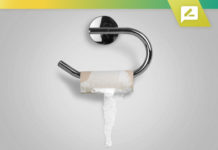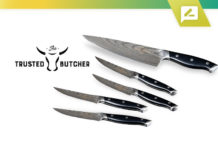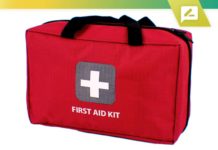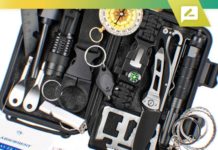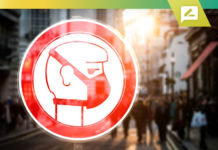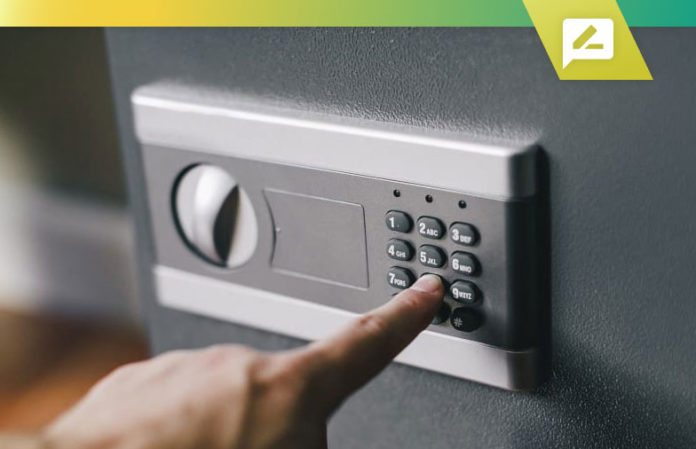A good safe can change your life. Home safes protect valuable assets from harm. Especially in the case of disasters like fires, floods, or home invasions, having a place to store your assets and documents can mean the difference between losing everything and keeping your most important possessions safe.
Some people use home safes to protect important documents. Others use home safes to store cash, jewelry, and other valuables. Many preppers use home safes for peace of mind. Whatever the reason, the practical function and value of a home safe cannot be understated.
A home safe protects your valuables from theft, fire, flood, and other physical loss. However, not all home safes are effective. Thieves can crack a bad home safe in seconds. Fire can destroy a cheap home safe. Even flood water can seep into holes in an ineffective safe and ruin thousands of dollars in valuables and documents.
Today, we’re listing the best home safes available, including the home safes that will protect your valuables from harm. This guide should help to inform consumers about everything they need to know as they shop around and search for a home safe.
Ranking the Top 19 Best Home Safes of 2023
Contents
Readers should always remember that our rankings are subjective. Our preferences and priorities might differ from your own, which means you should always do your own research, using our list of the top home safes of 2023 as a starting-point for your product search. The products below are listed in no particular order.SentrySafe SFW123GDC Fireproof Waterproof Safe
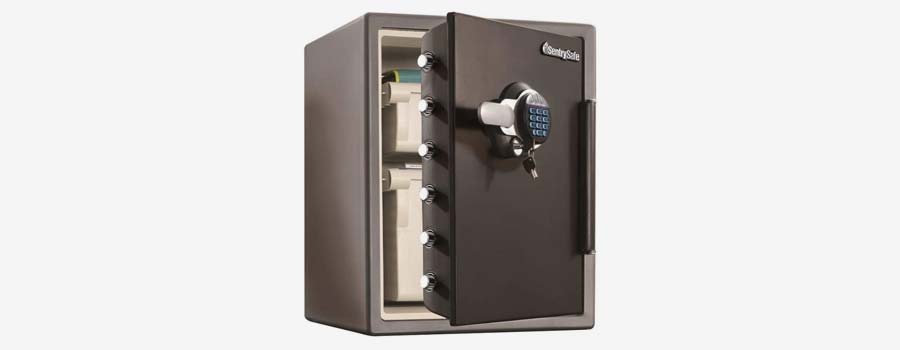
SentrySafe’s SFW123GDC is a fireproof and waterproof safe available in multiple sizes. It’s very popular on Amazon, where the safe has an average rating of 4.1 stars out of 5 with 2,600+ reviews. You can buy the safe in sizes of 0.82, 1.23, or 2.05 cubic feet. You can also choose a dial combination or digital keypad version.
The safe is UL classified to endure 1 hour at 1700°F while keeping interior temperatures safe. It’s also ETL verified for 24 hours of protection in water up to 8 inches deep, which could protect your belongings during a flood. It’s not as cheap as some of the budget options on our list, but it provides superior protection where you need it most.
Price: $176 (0.82 cubic feet) to $344 (2.05 cubic feet)
Get SentrySafe SFW123GDC Fireproof Waterproof Safe on Amazon
AmazonBasics Security Safe Box
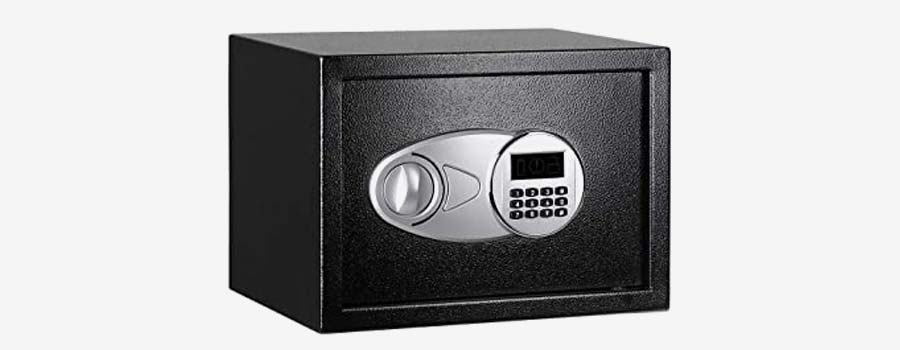
The AmazonBasics Security Safe Box is one of the internet’s best-selling home safes. It’s available in multiple sizes, including 0.5, 0.7, 1, and 1.2 cubic feet. With 8,000+ ratings on Amazon, the AmazonBasics Security Safe Box has an average rating of 4.3 stars out of 5.
The safe comes with all of the features you like to see in a basic home safe, including a mounting system, steel construction, reprogrammable door access (which uses four AA batteries), and two live-door bolts with pry-resistant concealed hinges. Be aware that the AmazonBasics Security Safe Box is not waterproof or fireproof, which is expected at this price range.
Price: $66 (0.5 cubic feet) to $94 (1.2 cubic feet)
Get AmazonBasics Security Safe Box on Amazon
SentrySafe SF123ES Fireproof Safe
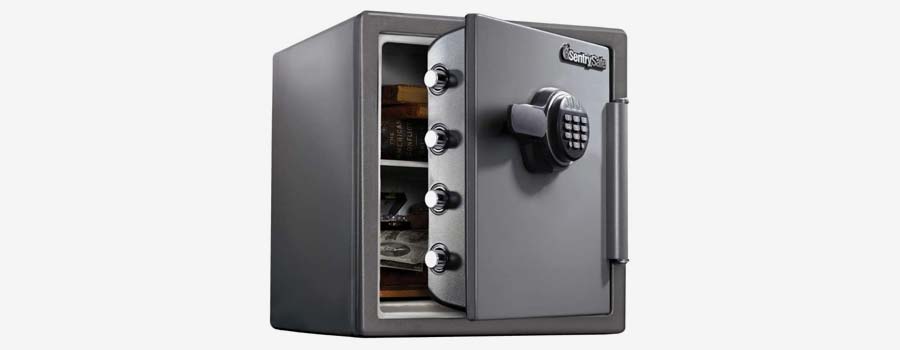
The SentrySafe SF123ES is a popular safe on Amazon. The fireproof safe is certified to endure 1700 degree Fahrenheit heat for one hour, keeping your belongings safe inside. It’s also rated to withstand a 15 foot fall during a fire and remain closed. SentrySafe specifically recommends the safe for storing irreplaceable documents, valuables, and other items.
The safe isn’t as large as some other options on this list (1.23 cubic feet), but it has multiple shelves for easy storage. The inside door of the safe also has multiple clips and folders for passports, keys, USB sticks, and more. If you want a small, fireproof safe from a trustworthy brand at a reasonable price, then the SentrySafe SF123ES Fireproof Safe is one popular option.
Price: $179
Get SentrySafe SF123ES Fireproof Safe on Amazon
AmazonBasics Fire Resistant Box Safe
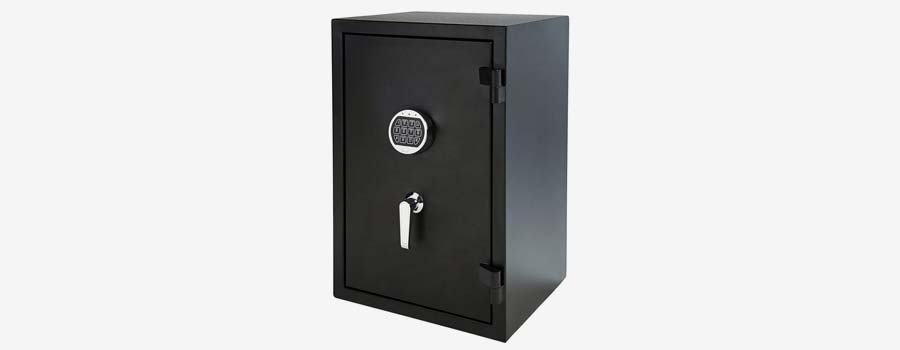
This is the second AmazonBasics home safe on our list. The AmazonBasics Fire Resistant Box Safe is a higher-end version of the Security Safe Box above. The safe claims to protect digital media, documents, and other valuables from theft or fire. It has a 14-gauge heavy-duty steel body construction and 5 large 0.75-inch bolts for added security. You get access via an electronic keypad, although there’s a backup key as well.
As the name suggests, this safe is fire resistant. Amazon tests the safe in 1200°F heat for 20 minutes to verify its fire resistance. It’s not technically fire proof – but it will withstand a significant amount of heat and fire. The AmazonBasics Fire Resistant Box Safe is available in three sizes, including 0.83, 1.24, and 2.1 cubic feet.
Price: $177 (0.83 cubic feet) to $247 (2.1 cubic feet)
Get AmazonBasics Fire Resistant Box Safe on Amazon
SentrySafe FHW40100 Fireproof Waterproof Box
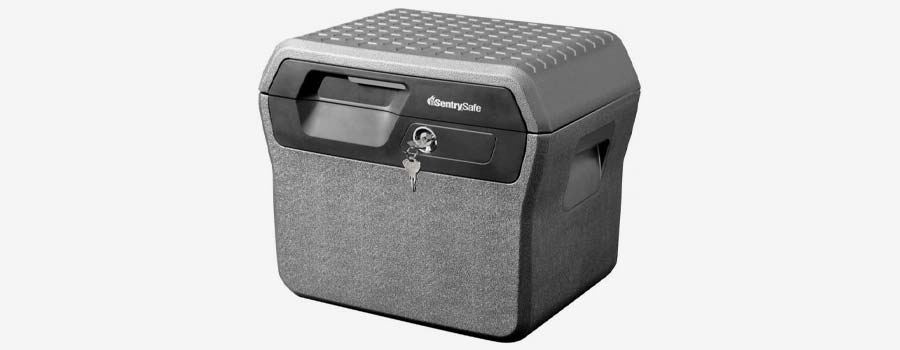
Some people don’t want a wall mounted safe. Instead, they need a portable and secure safe. If so, then the SentrySafe FHW40100 may be the right option. SentrySafe’s box is UL classified to endure 30 minutes at temperatures of 1550°F. The box is also verified to survive 72 hours submerged in water, giving you added peace of mind for any catastrophe.
Built-in carrying handles make the safe easy to carry. The safe weighs 41 pounds with nothing inside it, which shows you just how heavy duty it is. Despite the strong build quality and fire and water safety ratings, the safe has a very reasonable price tag.
Price: $60
Get SentrySafe FHW40100 Fireproof Waterproof Box on Amazon
Paragon Lock & Safe 7730 Drawer Safe
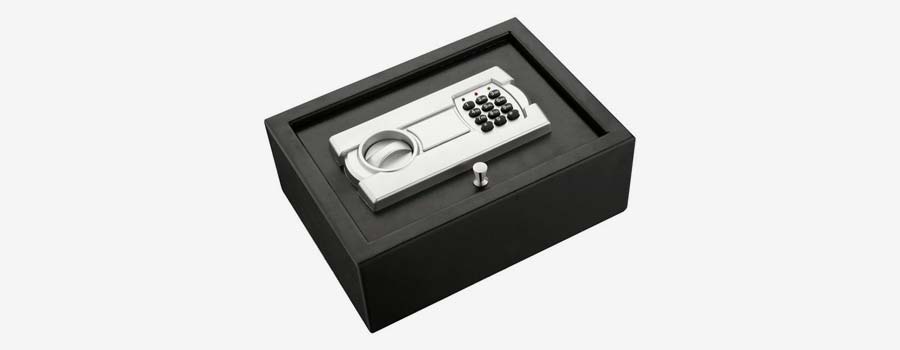
Some people have home safes in their closet or basement. Others keep a safe in their drawer – like a desk or kitchen drawer. If you want to protect valuables in your desk, then the 7730 Drawer Safe from Paragon Lock & Safe may be the right choice for you.
You mount the safe inside a desk drawer, closet, or vehicle. There are pre-drilled holes inside the safe, and your purchase comes with fixing bolts for easy anchoring. The keypad requires 2 x AA batteries to use, although the safe also comes with a key. The safe is made from solid steel and is 1/8” thick. It also has tamper-proof hinges.
Price: $58
Get Paragon Lock & Safe 7730 Drawer Safe on Amazon
AmazonBasics Home Keypad Safe
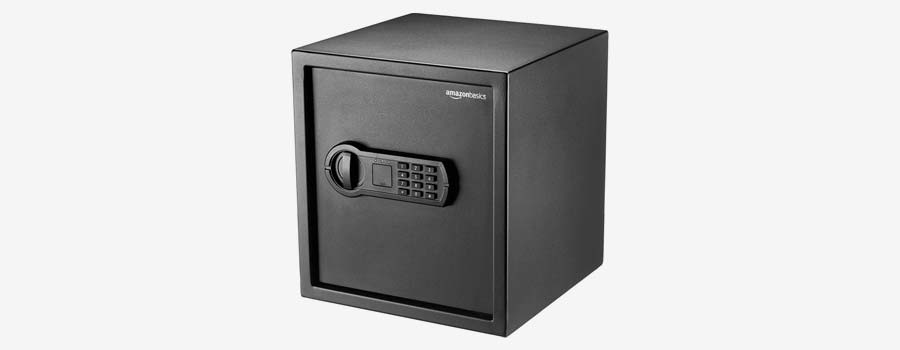
The AmazonBasics Home Keypad Safe is a basic, 1.20 cubic feet safe that uses heavy-duty carbon-steel construction and two live-door bolts to secure your belongings. The safe features an 8-gauge steel door and a 14-gauge steel body. There are pre-drilled mounting holes, and the safe comes with the required hardware for floor or wall mounting.
Like other AmazonBasics home safes, the AmazonBasics Home Keypad Safe has a keypad entry system and an emergency backup key. You’ll need to use 4 x AA batteries (not included) to use the safe’s keypad.
Price: $99
Get AmazonBasics Home Keypad Safe on Amazon
Paragon Lock & Safe Quarter Master 7775 Large Electronic Digital Safe
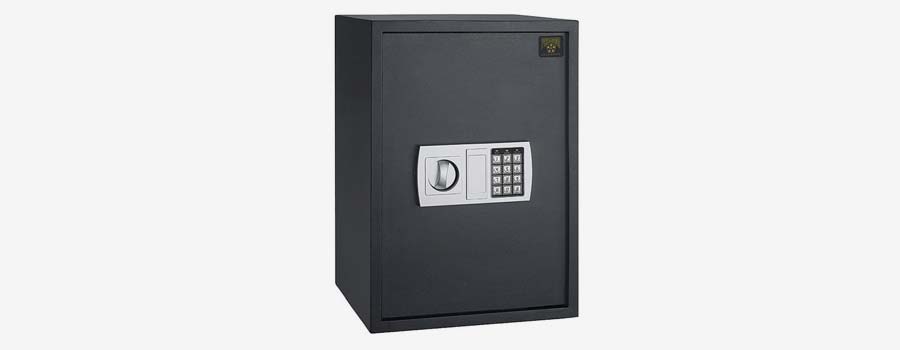
Paragon Lock & Safe offers a digital safe called the Quarter Master 7775, also labeled as a Large Electronic Digital Safe on Amazon. The safe is made from 11 gauge solid steel to resist hand and mechanical tool attacks. You can open the safe with a keycode or key. Unlike most safes, the Quarter Master 7775 comes with its own batteries, which means it’s ready to work out of the box.
As with other budget safes, the Paragon Lock & Safe Quarter Master 7775 does not claim to be waterproof or fireproof. At this price, the Quarter Master 7775 offers a good combination of protection and value compared to other 1.8 cubic feet safes on this list.
Price: $136
Get Paragon Lock & Safe Quarter Master 7775 Safe on Amazon
Steelwater Gun Safes
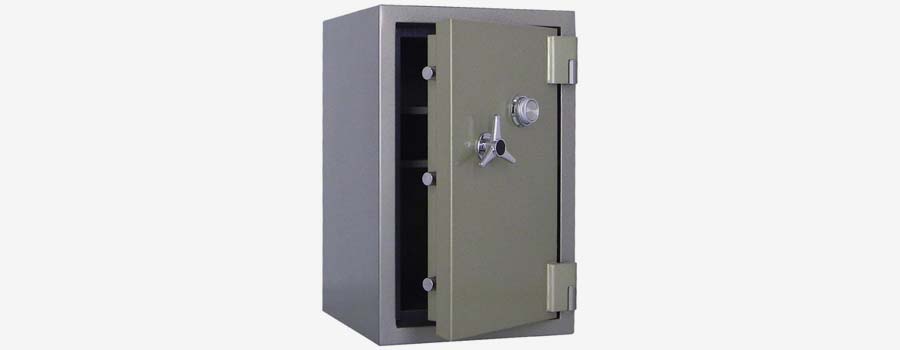
Steeelwater makes a range of gun safes designed for use at home. As with any gun safe, Steelwater’s gun safes can be used to store firearms and anything else. They’re heavy-duty, high-rated safes certified to protect against heat, water, and other catastrophes.
Steelwater’s AMSWFB-845 safe, for example, is a $1,200 beast rated to survive two hours at 1850 degree Fahrenheit temperatures. The safe weighs 410 pounds, which means it’s unlikely someone will easily remove the safe from your home. Steelwater also offers lighter-duty safes from $350 and up.
Price: $350 to $1,200
Get Steelwater Gun Safes on Amazon
Tigerking Digital Electronic Security Safe
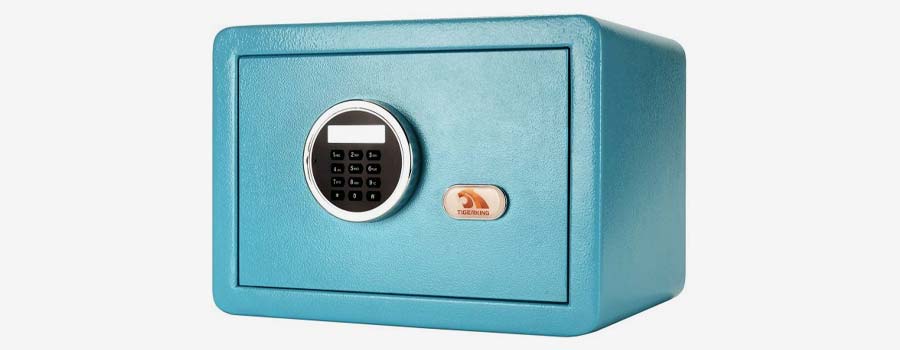
The Tigerking Digital Electronic Security Safe offers solid steel plates, two steel 0.8 inch live locking bolts, and a 3-8 digit keypad entry system. It also features a stylish blue color that distinguishes it from other items on our list.
Tigerking is a Chinese safe manufacturer. The company’s safes often come with alarm systems. If the safe detect violent vibrations or three incorrect entries, then you can set the safe to trigger an alarm. The Tigerking Digital Electronic Security Safe also comes with four pre-drilled holes for wall or floor mounting.
Price: $129
Get Tigerking Digital Electronic Security Safe on Amazon
SentrySafe XXL Digital Safe
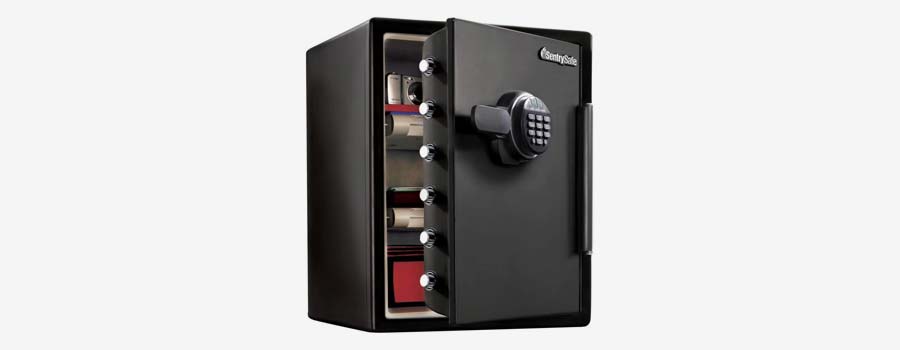
SentrySafe makes an extra large version of its popular home safe. The extra large, 2.0 cubic feet safe is rated as waterproof and fireproof. It can withstand temperatures of 1700°F for one hour, and it can survive for 24 hours in eight inches of water. You can set your own digital combination on the safe. Or, you can use the secondary key locking system.
Overall, this is a large safe backed by SentrySafe’s renowned durability and testing. Inside, you’ll find multiple shelves, pockets, and holders for various items, making the SentrySafe XXL Digital Safe an easy way to store passports, documents, electronics, jewelry, and more.
Waterproof and fireproof safes that are this large aren’t going to be cheap. However, at $390, SentrySafe is still very reasonably priced for this level of quality and protection at this size.
Price: $390
Get SentrySafe XXL Digital Safe on Amazon
Tigerking Digital Safe Box
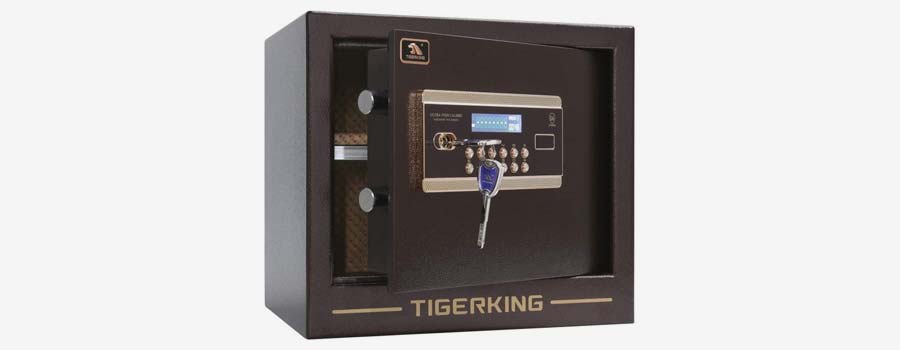
The Tigerking Digital Safe Box has a unique interface compared to any other safe on our list. The safe is available in three sizes, including 1, 1.34, and 3.47 cubic feet. A dual alarm system alerts you to violent vibrations or incorrect keypad entries (optional).
Tigerking’s Digital Safe Box differentiates itself from the competition with its LED smart panel and smart computer-based locking system. You can setup the safe with a master code and guest code, for example. You can also check the opening record for the safe. You can open the Digital Safe Box using the keypad or a manual key.
Price: $179
Get Tigerking Digital Safe Box on Amazon
Honeywell Steel Security Safe
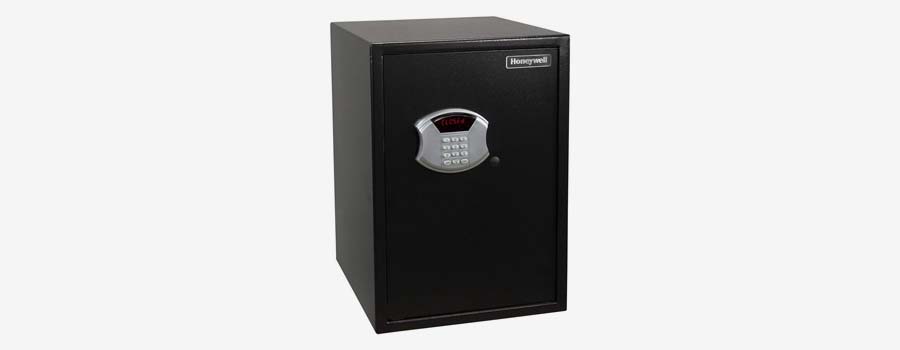
Honeywell is a trusted brand that offers a range of heavy-duty safes. This safe has average ratings online, where reviewers have criticized the lack of fire and water protection. However, it offers standard protection, wall mounting, and a seven-year limited warranty.
The safe can be bolted to the inside of a cabinet, shelf, desk, or wood floor. It claims to protect your belongings from fires, floods, thefts, and other events – although again, the safe makes no specific claims about its fire rating or other certifications.
Price: $200
Get Honeywell Steel Security Safe on Amazon
Viking VS-25BL Safe
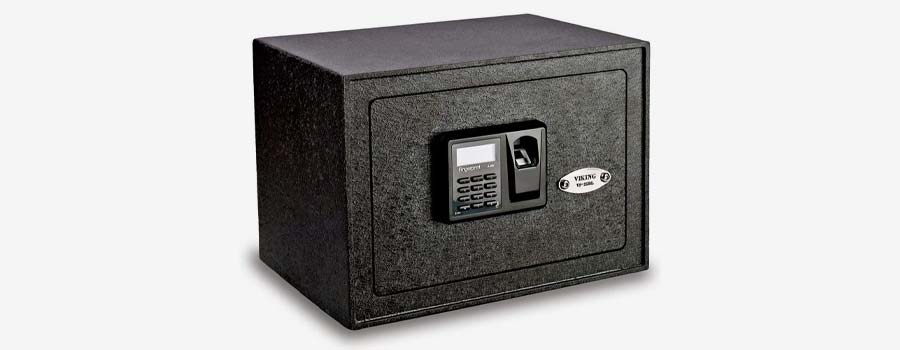
Viking VS-25BL safe is the only safe on this list with a biometric security system: the safe has a fingerprint scanner. You can scan and save up to 32 fingerprints. Or, you can access the safe with a PIN code.
The safe features a pry-resistant, solid steel design. There’s a motorized 20mm deadbolt locking mechanism, a 5mm door, and a four prong backup cross key. The safe makes no claims about being fireproof or waterproof, and it’s not particularly large. However, if you want easy fingerprint entry, then the Viking VS-25BL safe is one of the few options available.
Price: $210
Get Viking VS-25BL Safe on Amazon
First Alert 2087F Waterproof and Fire-Resistant Safe
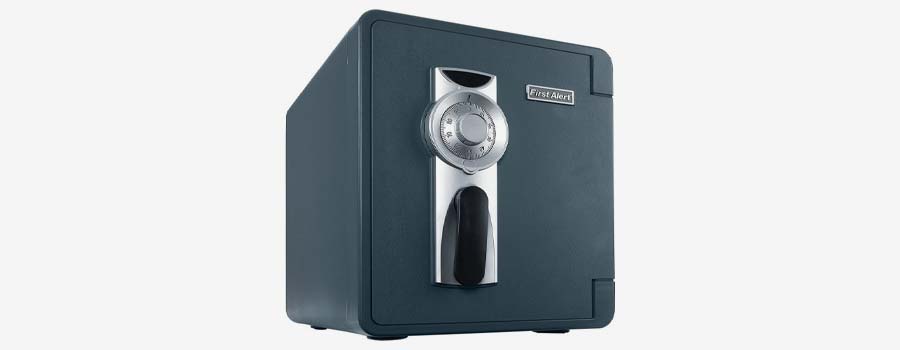
First Alert makes a waterproof, fire-resistant safe that can be bolted down wherever you need. The safe has the same fire resistance rating as some of the top-rated SentrySafe options above, capable of surviving temperatures of 1700°F for one hour. A waterproof seal also keeps contents dry even when the safe is submerged. The safe should also float during a flood (if it’s not bolted to the wall or floor).
First Alert’s 2087F safe is 0.94 cubic feet. Unlike most other safes listed here, the 2087F does not use a keypad or key entry system; instead, you gain entry using a combination dial.
Price: $165
Get First Alert 2087F Waterproof and Fire-Resistant Safe on Amazon
Yuanshikj Electronic Deluxe Digital Security Safe
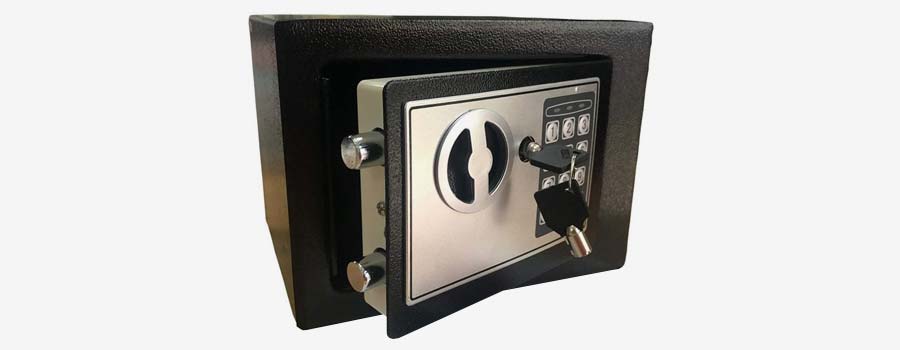
Chinese company Yuanshikj makes an electronic digital security safe with a programmable keypad and two emergency keys. The safe is available in red or black. With over 1,100 reviews on Amazon, the Yuanshikj Electronic Deluxe Digital Security Safe has an average rating of 4.1 stars out of 5.
The safe is made from steel and weighs 5.29 pounds (2.4kg). It comes with four batteries, letting you operate the keypad out of the box. The safe makes no claims about being fireproof or waterproof.
The biggest selling feature of the Yuanshikj Electronic Deluxe Digital Security Safe is its price tag. At just $40, it’s the cheapest home safe on our list. It offers very basic protection at a very low price tag.
Price: $40
Get Yuanshikj Electronic Deluxe Digital Security Safe on Amazon
TurboSAFE
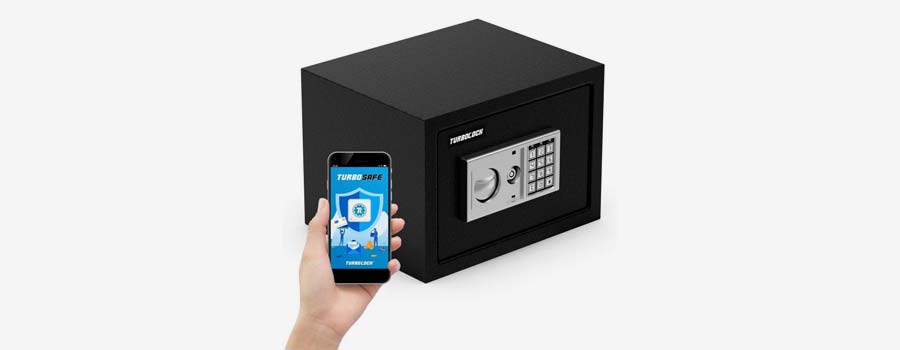
TurboSAFE is the only home safe on our list that comes with its own app. TurboSAFE from Turbolock is a “smart safe”. You unlock TurboSAFE via a passcode or through physical keys. You can stay connected to your safe at all times via the TurboSAFE monitoring app for iOS or Android.
TurboSAFE’s app alerts you when your safe has been opened. It also provides a constant status update for your safe – like whether the safe is open or closed. You can run diagnostic tests on your safe via the app, adjust motion sensitivity, or check battery life, among other functions.
Despite having all of these smart features, TurboSAFE is very affordable. At $100, it competes with some of the budget options on our list. However, the safe makes no claims about being fire or water resistant, and it’s not nearly as durable as some of the top-ranked options on our list.
Price: $100
Moroly Digital Electronic Safe Box
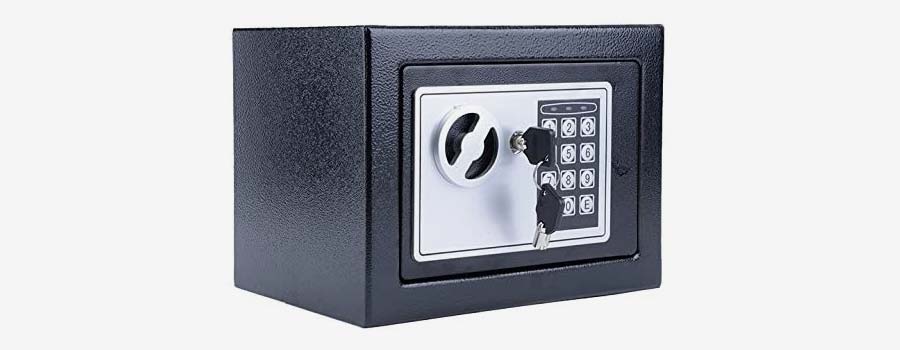
If you want a cheap, small safe for basic protection, then the Moroly Digital Electronic Safe Box may be the right choice for you. The safe competes with the Yuanshikj safe above as the two cheapest options on our list (both are around $40).
The safe, as you might expect, isn’t particularly durable. Moroly makes no claims about the safe being fireproof or waterproof. However, at this price range, you don’t expect any of those features.
Price: $43
Get Moroly Digital Electronic Safe Box on Amazon
Stalwart Digital Safe
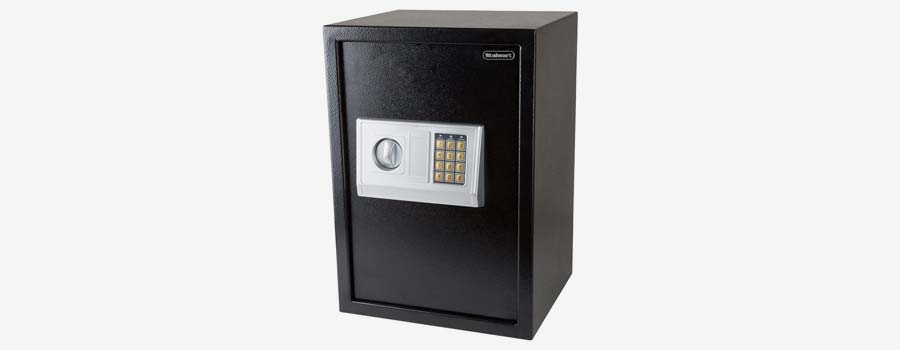
The Stalwart Digital Safe is an electronic safe with two manual override keys included. The safe is wall or floor mountable and has bolt holes on the back and side. After three incorrect keypad entries, the safe’s alarm will sound for 20 seconds. After three more incorrect entries, the alarm will sound for five minutes. You can choose a 3-8 digital password.
The Stalwart Digital Safe offers basic protection at a budget price. It’s not as strong or sturdy as better-rated safes on our list, and Stalwart makes no claims about its safe being fireproof or water-resistant. Some reviewers indicate they could break the safe open with a sledgehammer. However, at this price range and size, the Stalwart Digital Safe offers decent value nonetheless.
Price: $84
Get Stalwart Digital Safe on Amazon
How We Ranked
Our editorial team considered all of the following factors to compile our best home safe rankings above.
Security: Some of the cheapest home safes can be lock picked in minutes. We carefully assessed the security of each safe, checking Google for any lock picking tutorials or videos explaining how to hack the safe.
Durability: Some safes are rated to survive a house fire, while others will melt under such heat. Some safes won’t survive one hit from a sledgehammer. If you want maximum protection, then you need maximum durability.
Fireproofing and Waterproofing: Some safes are specifically designed to prevent water ingress or resist melting during a fire, while other safes are not fireproof or waterproof at all. Many safes claim to be water or fire resistant, which means they’ll protect against certain water and fire damage but not all damage.
Ease of Use: A good home safe is not just secure – it’s also easy to use. We emphasized home safes that were easy for homeowners to access while still providing impeccable security.
Entry System: Some home safes use keys. Others use keypads. Some used both. Different entry systems are suited for different needs, although we verified the entry system was secure and easy to use.
Size: Some people need a safe large enough to hold guns. Others just need a safe to securely hold a stack of cash or some jewelry. We featured a range of safe sizes to suit all different needs.
Burglar Ratings: Burglar ratings verify the security of a safe. A B-rate or B/C-Rate safe is ideal for protecting $10,000 to $20,000 of valuables, for example, while higher-rated safes may be more appropriate for higher-end items. We’ll talk more about burglar ratings below.
Mounting System: Many of the home safes above had a mounting system. You can mount the safe to a wall, floor, or shelf for added security.
Alarm Systems: Some safes have alarm systems triggered when three incorrect codes are entered or when vibration is detected. Other safes have no alarm systems.
Stainless Steel Gauge: Most home safes are made from stainless steel, although different safes use different gauges of stainless steel. The higher the gauge, the more protection. 12 gauge stainless steel is ideal for the walls of the safe.
Portability: Some safes above are designed to be portable. You can leave them in your car or carry them with you while traveling, for example, or carry them with you before a forest fire reaches your home. We considered features like handles and weight for safes designed to be portable.
Storage Space: Some safes have shelves, hooks, and protective folders inside for easy storage. Other safes are empty containers with no storage system.
UL and ETL Testing: Some safes make big claims about their durability – but there’s no actual proof. Other safes are certified by UL, ETL, and other rating organizations. These organizations put safes through intense stress tests to verify their durability.
Other Third Party Testing and Verification: Some of the top-rated home safes have been tested to verify durability. Amazon tests its AmazonBasics home safes, for example, by applying 1200 degree heat for 20 minutes, while SentrySafe tests some safes by applying 1700 degree heat for 1 hour. Some safe manufacturers do fall tests. Some SentrySafe safes are certified to survive a 15 foot fall during a fire and remain closed, for example.
Who Should Use a Home Safe?
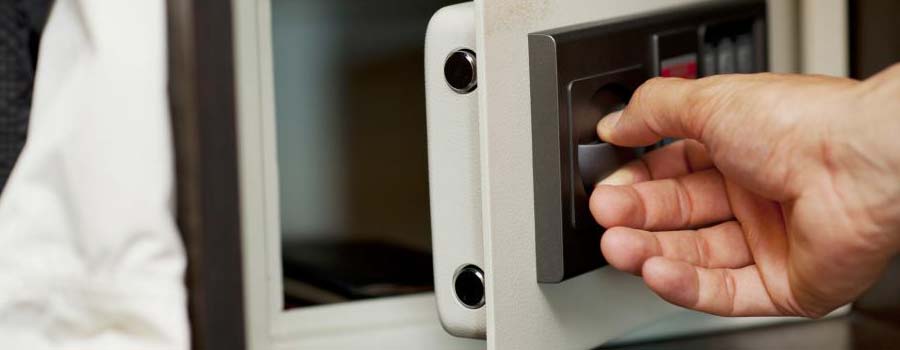
Home safes are for anyone who wants peace of mind. Your home is filled with valuable items. If you don’t have a safe, then these items are not protected.
Some people use a home safe because they own large amounts of cash. Maybe you don’t trust a bank. Maybe you have an unconventional business.
Other people use home safes to protect wills, deeds, passports, birth certificates, and other important documents.
Some people store firearms in a safe. Depending on your jurisdiction, you may be required to store firearms or ammunition in a safe.
Do you own jewelry, diamonds, coins, or collectibles? You could lose these items from fire, flood, or theft. Even if these items are insured, it’s a good idea to keep them in your safe. And, if these items are not insured, then you have added reason to keep them in your safe.
Maybe you live in a flood zone. Maybe forest fires are common in your region. Maybe you’re worried about hurricanes, tornadoes, earthquakes, or other natural disasters.
Or, some people are worried about theft. Maybe home invasions or burglaries are common in your area. Maybe your neighborhood is a target for thieves. Maybe you live in a rough part of town.
Some preppers buy home safes for added protection. A home safe can keep your possessions secure until you need them most.
Many crypto users use home safes. You might store a paper wallet in your safe, for example, to serve as a backup for your bitcoin keys if you ever lose access to your hardware wallet. Others use safes as a crypto cold storage system, leaving USB sticks or hard drives in a safe until needing to access them.
Our guide assumes you’re using a home safe for your house. However, all of the safes above can be used – and are used – at businesses, offices, and other environments across the country.
Whatever the reason may be, everyone can benefit from a home safe. If you have anything you want to protect, then a home safe can help.
Benefits of a Home Safe
Home safes are a proven way to keep your valuables safe. Many of the safes above make big claims about their durability, then back these claims up with UL verification and other third party certification.
According to the FBI, there are more than 1.4 million burglaries every year across the United States. That means there are approximately three burglaries every minute in America, making burglary the second most common crime behind larceny-theft.
The average homeowner loses $2,500 worth of valuables during a burglary. In total, homeowners across the United States lost around $3.4 billion from burglaries in 2017.
Burglaries account for 18.2% of all property crimes. 58% of burglaries involve forcible entry, while 36.2% are unlawful entries and 6.3% are attempted forcible entries.
67.2% of burglary attempts are reported at residential properties, while commercial properties account for the remaining attempts.
Another study found residential burglaries were even more common, with 88% of all burglaries occurring in residential areas. That same study found that 3 out of 4 homes in the United States will be broken into within the next 20 years.
Many people are surprised to learn that most burglaries happen during the day. According to a 2016 burglary victimization survey by UNC Charlotte, most burglaries occur between 12pm and 4pm. Just 17% of burglaries took place at night (between 10pm and 6am). Burglars know they attract less attention walking around a neighborhood or apartment complex during the day.
Many people are also surprised to learn that burglaries don’t always occur in empty houses. According to the Bureau of Justice Statistics, a household member is present in approximately 28% of burglaries.
Burglaries are also more frequent during summer months, as burglaries rise 10% in June, July, and August. Long summer days have more hours of daylight, helping thieves attract less attention. Plus, burglars don’t want to prowl outside in sub-freezing temperatures.
Certain states are more prone to burglaries than others. States with the highest rates of burglary include New Mexico (830.4 burglaries for 100,000 inhabitants), Arkansas (795.5), Mississippi (781.4), Oklahoma (741.7), Louisiana (740.5), North Carolina (710.4), Alabama (700.5), Washington (674.8), South Carolina (664.7), and Nevada (641.1).
Burglars aren’t stupid: many are experienced professionals who know all of the good hiding places in a home. In a 2017 study, researchers gave professional burglars a virtual burglar situation to see how they approached a home.
Burglars all bypassed downstairs living areas, heading straight for the upstairs bedrooms for jewelry and cash. Burglars typically ignored TVs and other bulky electronics, grabbing smaller items that would easily fit inside a pocket. This helps the burglar draw less attention exiting the property.
That’s why safes are extra important: burglars target small and portable items – like the cash, jewelry, coins, and collectibles you might leave in a home safe. Without a home safe, these items are easy for a burglar to grab.
Obviously, a safe does not prevent a burglary. However, it does deter thieves. If someone gains access to your home or business, then they may not be able to steal your cash, jewelry, firearms, and other high-value items.
Another benefit of home safes is that they’re available in a huge range of sizes. Some people buy gun safes capable of safely storing long guns, for example. Others buy small safes just large enough to store a passport, deed, birth certificate, and other documents.
Home safes are proven to keep valuables protected during a disaster. A house fire, flood, or storm could destroy your home and everything inside it. A good safe, however, keeps your valuables protected. Many homeowners have been able to dig through the wreckage of their home to recover a safe with everything inside intact.
The days following a disaster can be devastating. If you have a safe with valuable items inside, however, it makes picking up the pieces after a catastrophe much easier. Dealing with insurance can be challenging enough – you don’t want to deal with insurance while also trying to replace your passports, official documents, jewelry, and other items.
Safes are also a proven way to protect sensitive electronics. Many people store USB sticks, DVDs, and other electronic data storage items in a safe, for example. A fireproof and waterproof safe is proven to keep these items protected against the environment. Whether it’s five years or 50 years from now, someone should be able to access any electronic data stored in a safe.
Choosing the right safe is important. Fire safety experts recommend choosing a fire-resistant safe, which is engineered to keep the interior of the safe below 350 degrees, which is the temperature at which paper starts to char. Paper officially starts to burn at 451 degrees Fahrenheit.
However, some fire resistant safes work by creating steam (moisture) inside the safe, which might protect certain items but not others. Any sensitive data or media could be badly damaged or destroyed inside the safe. If the safe’s interior temperature rises above 120 to 180 degrees or 85% humidity, then your media could be destroyed.
Underwriters Laboratory runs safes through Test Performance Ratings, then gives each safe a burglar rating. UL recommends using these ratings to know how to store different items. If you’re storing $50,000 worth of valuables in your safe, for example, then you should have a minimum C-Rate safe. Here’s how ratings break down:
B Class: B class safes have steel doors less than 1” thick and steel bodies less than 1/2″ thick. They offer “Good Protection” and are best used for storing valuables totaling $10,000 to $20,000.
C Class: C class safes have steel doors at least 1” thick and a steel body at least 1/2” thick. They offer “Better Protection” against burglaries and are best used for storing valuables up to $10,000 to $30,000.
UL RSC: UL rates some safes as Residential Security Containers (RSC), which means they have a group II combination lock or type 1 electronic lock, door material equivalent to 3/16” open hearth steel, and body walls of material equivalent to at least 12 gauge open hearth steel. To qualify for UL RSC certification, the safe must successfully withstand entry for a minimum of five minutes against rigorous prying, drilling, punching, chiseling, and tampering attacks by UL technicians. These safes are recommended for valuables totaling $30,000 to $50,000.
UL TL-15: TL-15 safes are “tool resistant safe” and verified to withstand attacks for 15 minutes. They must weigh a minimum of 750 pounds and come with specific locking requirements. These safes can safely store valuables of $100,000 to $200,000.
UL TL-30: Safes that are TL-30 certified by UL must resist entry for 30 minutes when attacked with hand tools, electric tools, carbide drills, and other devices. They must also weigh at least 750 pounds and exceed certain locking requirements. They’re ideal for amounts from $200,000 to $500,000.
UL TL-30×6: Safes with this certification are tool resistant safe and offer maximum protection against common mechanical and electrical hand tools. They must meet strict locking and weight requirements while resisting attacks for a minimum of 30 minutes.
Frequently Asked Questions About Home Safes
Home safes are often effective, but the wide variety of safes available might make it difficult for consumers to properly determine what they need for their purposes. This section will answer many of the most commonly asked questions that consumers have about home safes.
Q: How does a safe work?
A: A safe is a metal case with a locking door. The safe is designed to withstand physical attacks, mechanical attacks, electronic hacks, fire and water damage, and more. Generally, a good safe will protect consumer documents and assets from nearly any threat that could be posed.
Q: What can you put in a safe?
A: You can put anything in a safe, including passports, documents, firearms, jewelry, electronics, USB sticks, and anything else you want to protect. The only limitation to what can be put in a safe is that the item cannot be too big to fit.
Q: What should you look for in a home safe?
A: A good home safe is fireproof and waterproof (or at least fire-resistant and water-resistant), featuring thick, stainless steel walls and a tamper-proof door with an effective locking mechanism (like a keypad, a manual key, or a fingerprint sensor). Any safe that does not protect against fire and water damage might be ineffective, as these are the biggest threats to most peoples' documents.
Q: What’s wrong with a cheap home safe?
A: Cheap home safes cost as little as $40. They offer very basic protection at a budget price. They won’t withstand physical attacks and can easily be lock-picked or hacked, but they may deter some theft. These safes might work for cheaper items and documents, but truly expensive assets should be protected with a high-quality safe, and these safes can be expensive.
Q: Why do safes need batteries?
A: Most keypad safes require batteries to operate. These batteries power the keypad. If you don’t want to use the keypad, then you can unlock the safe with the backup key. Consult the instructions for your safe to figure out if you need batteries.
Q: Should you mount your safe?
A: Most experts recommend mounting a safe on a wall or floor for added security. You might have the best safe in the world, but a thief can still pick up the safe and leave. Most safes have mounting systems (including pre-drilled holes) for added security.
Q: What are burglar ratings for safes and how do they work?
A: Most safes above have burglar ratings of B or C-Rate, which is normal for consumer-grade safes. Underwriters Laboratory tests safes against physical and mechanical attacks, then rates each safe based on its effectiveness against thieves and burglars.
Q: What happens if you lose the combo to your safe?
A: If you lose the combo or keypad to your safe, then you may be able to open the safe manually using your key. If you have lost your key and keypad or combo code, however, then you may no longer be able to access the safe. Contact the safe manufacturer for potential recovery steps. Alternatively, you might be able to hire a locksmith.
Q: How do you obtain a new safe key?
A: Some safe companies send you a new key if you provide a notarized statement of ownership. Other companies will not, in which case you may need to hire a locksmith to regain access to the safe. This generally depends on your safe manufacturer.
Q: Should you register your safe?
A: Companies like SentrySafe recommend registering your product to ensure better customer service. This can help you recover your safe if you lose access, although you do not need to register your safe to use it.
Q: Which size of safe is right for you?
A: This depends largely on what you’re storing. If you’re just storing passports, USB sticks, small jewelry, and other documents, then you may be fine with the smallest safe size. If you’re storing long guns, collectible items, and other valuables, however, then you may need a larger safe.
Q: What is the minimum fire rating to protect paper and money?
A: Paper burns at 451 degrees. Fire resistant safes should have a minimum of a one hour fire rating against 800 to 1200 degree heat or higher.
Q: How hot is the average house fire?
A: A typical house fire burns in the 800 to 1200 degree temperature range. Depending on how close your safe is to flames, it could be exposed to temperatures in the low or high end of this range.
Q: Which lock is best for a safe?
A: Better quality dial and electronic locks are UL rated to provide superior levels of protection. Any UL certified safe must meet certain locking requirements, so it doesn’t necessarily matter if it’s a dial, combo, or electronic lock – as long as it’s UL certified.
Q: Where should you place my safe?
A: Most experts recommend placing a safe in a spot where you can easily use it while still being protected from view. If your safe is hard to reach (say, hidden behind drywall), then you may not go through the trouble of storing valuables inside. Ideally, your safe will be surrounded by concrete – not flammable material – to limit heat exposure during a fire.
Q: Are electronic locks EMP resistant?
A: Some electronic locks are resistant to EMPs, while others are not. Consult the manufacturer of your safe to figure out if the product is EMP resistant.
Q: Should you anchor your safe?
A: If you don’t anchor your safe, then a thief could move it. Many safes come with pre-drilled holes and mounting bolts, letting you easily attach the safe to wood, concrete, or other materials. All the safe ratings in the world cannot protect a non-anchored safe from simply being picked up and walked out of your home in the case of a home invasion.
Q: What’s the best home safe?
A: AmazonBasics, SentrySafe, Steelwater, Paragon, and Tigerking all make popular, well-rated home safes. The best safe depends primarily on what you want to get out of your safe.
Q: Where do you buy a home safe?
A: You can buy a home safe from Amazon, Walmart, and many other major online and offline retailers. Some safe manufacturers might sell their safes only on an official product website.
Q: Are all safes fireproof?
A: No, many cheaper safes are not fireproof. In fact, no safe is technically fireproof, as all safes fail if a fire lasts long enough. Many safes, however, are labeled as fireproof or fire resistant because they withstand temperatures of 800 to 1200 degrees for periods of 1-2 hours.
Q: Are all safes waterproof?
A: No, many cheaper safes are not waterproof. Safes advertised as waterproof or water-resistant can survive underwater for 24 to 72 hours, although they may not survive in deep water or for longer periods of time.
Q: What’s the difference between a home safe and a business safe?
A: A home safe is generally built to withstand fires and burglaries, while commercial safes may have features to reduce employee theft – like automatic alarms after three incorrect keypad entries or remote notification systems. Commercial safes are also designed to store higher value items – like larger amounts of cash – and may have higher security ratings.
Q: How much should you spend on a home safe?
A: The best-rated home safes above cost between $40 and $1,200. Some high-end safes cost much more than that. You can get a good fireproof and waterproof safe for between $150 and $300. Safe costs depend on the materials used and the effectiveness of the safe being purchased.
Q: What do you do if your safe keypad stops working?
A: Most home safe keypads require batteries to work. Replace the batteries and try again. You may need to open the safe with your manual override key to replace the batteries.
Q: How do you change the combination to a safe?
A: Most safes have a red reset button either inside the battery compartment or on the top left of the safe door. Press and hold the reset button until you hear a beep, then enter the new 3-8 digit number.
Q: How heavy should my safe be?
A: The highest-rated safes can weigh more than 1,000 pounds and offer maximum protection. Most home safes, however, are much lighter. The heavier your safe is, the harder it is to move.
Q: What is ETL certification?
A: ETL stands for Electrical Testing Laboratory, a division of Intertek Group, which specializes in electrical product safety testing. Some safes mention ETL Certification for their electronic locks.
Q: What is UL?
A: UL, or Underwriters Laboratories, is a US-based independent testing organization. The company tests home safes, putting them through rigorous stress tests and other analyses to determine their effectiveness.
Q: What do you do if you lock your keys inside your safe?
Q: Most safes require the key to lock the safe, which means it’s tough to lock your key inside. Enter your passcode or combination to regain entry to the safe. Or, if that fails, contact the safe manufacturer. You may want to hire a locksmith if the manufacturer will not help you get into your safe.
Q: How much does it cost to get a safe opened?
A: Locksmiths charge anywhere from $150 to $400 to open an ordinary safe.
Q: Can an ordinary key locksmith crack a safe?
A: Many locksmiths have trained safe and vault specialists on staff to crack a safe. However, make sure the locksmith specifically advertises safe and vault unlocking to ensure you’re hiring the right company.
Q: What’s a smart safe?
A: Some safes are advertised as smart safes, including TurboSAFE. These safes are internet-connected, and you can interact with your safe via an app. TurboSAFE lets you check opening history, open/close status, and other information via a mobile app for iOS or Android, for example.
Q: Are electronic keypads more or less safe?
A: If a keypad is UL verified, then it should be no more or less safe than another locking mechanism. Some cheaper safes, however, have less safe electronic keypads.
Final Thoughts
You should probably get a safe for your home.
You never know when a tornado, fire, flood, hurricane, or other environmental disaster will affect your home. Plus, there are over 1.4 million burglaries in the United States every year – and many people wait to buy a safe until it’s too late.
For all of these reasons, there’s never a better time than today to purchase a safe. Consider buying one of the top-rated home safes above to protect your valuables.

